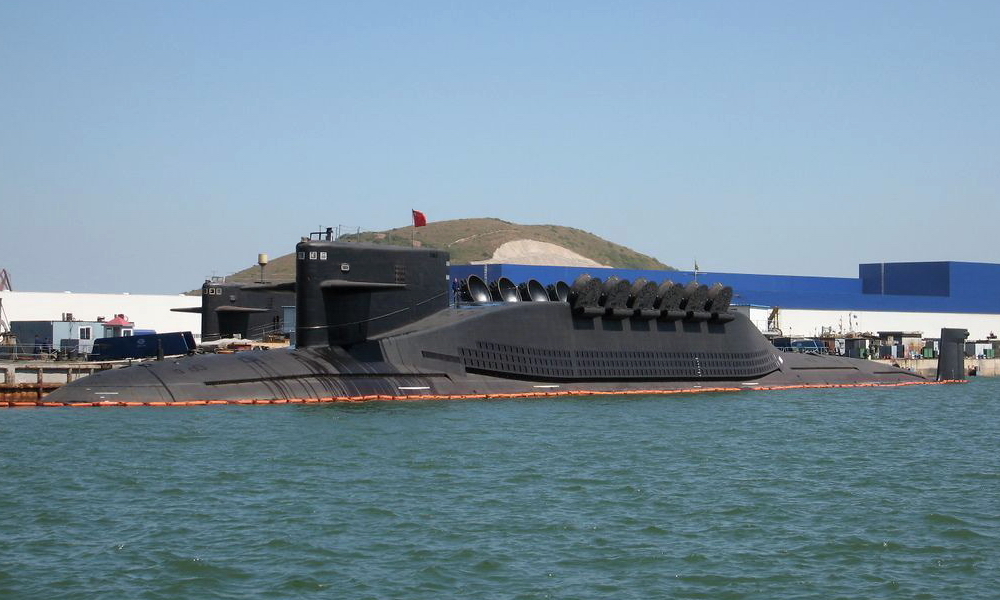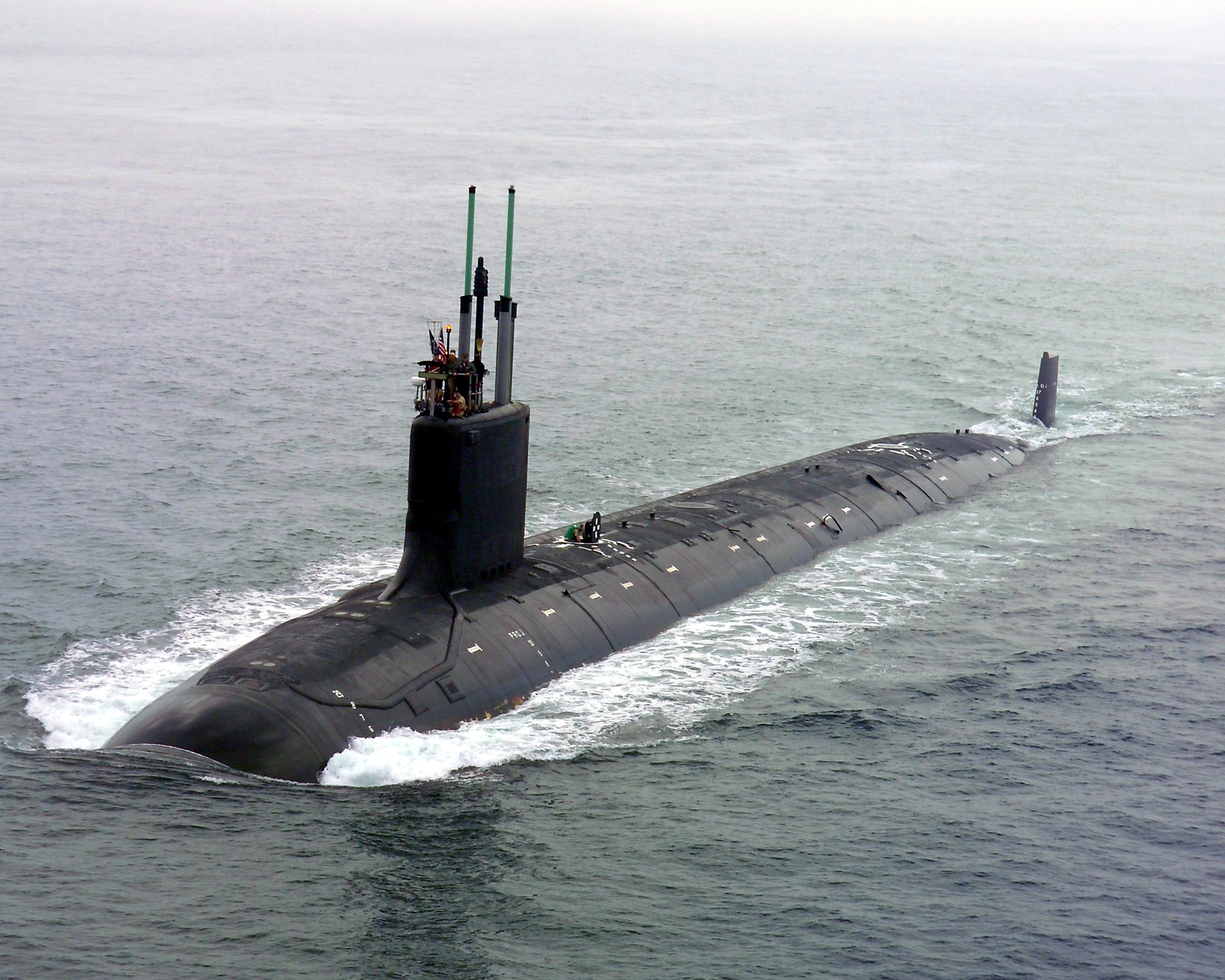China’s People’s Liberation Army – Navy (PLAN) has been adding new, more sophisticated submarines to its fleet, forcing the United States to acquire new capabilities. PLAN has also increased deterrence patrols by its nuclear submarines in the Pacific Ocean.
For the first time, China is maintaining at least one nuclear-armed ballistic missile submarine permanently at sea, increasing pressure on the United States and its allies as they attempt to contain Beijing’s expanding military, said the latest analysis of a Pentagon report published by Reuters.
According to the Pentagon report, China’s fleet of six ballistic missile submarines of the Jin class was conducting “near-continuous” patrols out of Hainan Island into the South China Sea. Hainan Island, also known as China’s Hawaii, is home to the Yulin Naval base that houses PLAN’s submarines.
The deployment of these nuke submarines is complimented by very long-range missiles that can strike the heart of the United States. General Anthony Cotton, the head of the US Strategic Command, testified before Congress in March that the Chinese submarines are now armed with the JL-3.
The Pentagon reports that China can now, for the first time, reach the mainland United States from Chinese coastal waters, thanks to the JL-3’s estimated range of more than 10,000 kilometers (6,214 miles) and multiple warheads.

Previous reports indicated that the JL-3 would be deployed on the next-generation Type-096 submarine, which is currently under development. However, the testimony by General Anthony Cotton signals that the US mainland could already be within the range of the Chinese sub-launched missiles.
Even though the 174-page report received little attention when it was first published in late November, five other security experts and four local military attachés familiar with naval operations believe it to be a vital indicator of Chinese capabilities, according to Reuters.

The US Department of Defense earlier noted that China could become capable of fielding eight SSBNs by 2030, with Type 094s and Type 096s operating simultaneously. The Type 094 platform can carry up to sixteen JL-3 missiles, while the Type 096 submarines can carry as many as 24.
Currently, the only nuclear-capable submarine in the PLAN inventory is the Type 094 or the Jin class. The platform is China’s “first credible sea-based nuclear deterrent,” according to the US Department of Defense.
Military analysts predict that with the JL-3 missile, Chinese strategists will prefer to retain their ballistic missile submarines in the South China Sea, where they have built several facilities, rather than risk patrols in the western Pacific Ocean.
The Jin class is believed to be traceable due to a design defect near the missile hatches at the back of the hull, which could generate a detectable sonar signal. However, armed with long-range missiles, the submarine could pose a significant risk to US security, nonetheless, and force the US Navy to enhance capability by allocating more resources.
The US’s concerns about the rapid acquisition of capability by China are not new. Despite arriving at the scene later than its peers, the PLAN has made steady advancements and significant investments in deploying a modernized SSBN force in the near future. There are six Type 094 submarines, with two more in the pipeline.
Earlier, an unclassified analysis by the US Office of Naval Intelligence (ONI) said China’s submarine fleet is expected to grow from 66 vessels to 76 by 2030.
Double Trouble
The report notes that the ongoing Chinese ballistic missile patrols at sea place strain on the resources of the US and its allies as they step up their Cold War-style deployments. This may be exacerbated by the constant need to deter the Russian Navy simultaneously.
According to three analysts, Russia is believed to retain most of its 11 ballistic missile submarines in bastions off its Arctic shores, while American, French, and British vessels travel farther afield. However, that may soon be set for a significant change.
Last month, the head of US Northern Command told the Senate Armed Services Committee that Russia could have its most powerful and quiet nuclear attack submarines on persistent patrols off either US coast in the next two years. NORTHCOM commander Gen. Glen VanHerck said that Russia had increased the deployments of its Yasen-class nuclear submarines.

“[The risk is] absolutely increasing. Within the last year, Russia has also placed their [Yasens] in the Pacific,” he said. “Now, not only the Atlantic, but we also have them in the Pacific, and it’s just a matter of time – probably a year or two – before that’s a persistent threat, 24 hours a day. … That impact has reduced decision space for a national senior leader during a crisis.”
This means the US and its allies must up the game significantly to contend with the twin threat posed by Chinese and Russian deployments.
According to the Pacific Fleet, the US Navy maintains roughly 20 nuclear-powered attack submarines stationed throughout the Pacific, including in Guam and Hawaii. In 2027, American and British nuclear-powered vessels will operate from western Australia.

The US is also helping Australia to field its first nuclear-powered submarines, as evident with the deal that will see the sale of Virginia-class vessels to Canberra. Under the AUKUS arrangement, that capability will see further enhancement as Australia will field its first nuclear-powered submarines over the next two decades.
With the support of surface ships and P-8 Poseidon observation planes, these submarines are the primary weapons for hunting ballistic missile submarines. To help find submarines, the US also has sensors on the seabed in important shipping lanes.
However, despite its widespread deployments and state-of-the-art technological advancements, the increasing Chinese deployments are expected to put a massive strain on the United States, noted the news report.
Putting Pressure On US Resources
Speaking informally to Reuters, Christopher Twomey, a security scholar at the US Navy Postgraduate School in California, said that the additional demands on the US resources will be obvious.
“We’re going to want to have our SSNs trying to tail them… so the extra demands on our assets are clear. But the point here is that the information – the near continuous patrols – has changed so rapidly that we don’t know what else has changed.”
Further, the report said that the new patrols suggest advancements in several areas, including command and control, logistics, and weapons.
Military attachés, retired submariners, and security analysts also demonstrate how China has begun to operate its ballistic missile submarines like that of the United States, Russia, Britain, and France for decades.
Chinese nuclear-armed submarine deployments also mean that even if land-based missiles and systems are destroyed, they can still threaten a nuclear counterattack, thanks to their “deterrence patrols.” That essentially prevents an enemy from initiating a first strike.
Defense expert Timothy Wright of London’s International Institute for Strategic Studies stated that while US forces could likely handle the situation, they would need to commit more resources in the ensuing 10 to 15 years after the more covert Type-096 patrols start.
He added that China’s rapid expansion of its nuclear forces means US strategists must contend with two “nuclear peer adversaries” for the first time, alongside Russia.
“That will be of concern to the United States because it will stretch US defenses, hold more targets at risk, and they will need addressing with additional conventional and nuclear capabilities,” he said.
- Contact the author at sakshi.tiwari9555 (at) gmail.com
- Follow EurAsian Times on Google News




